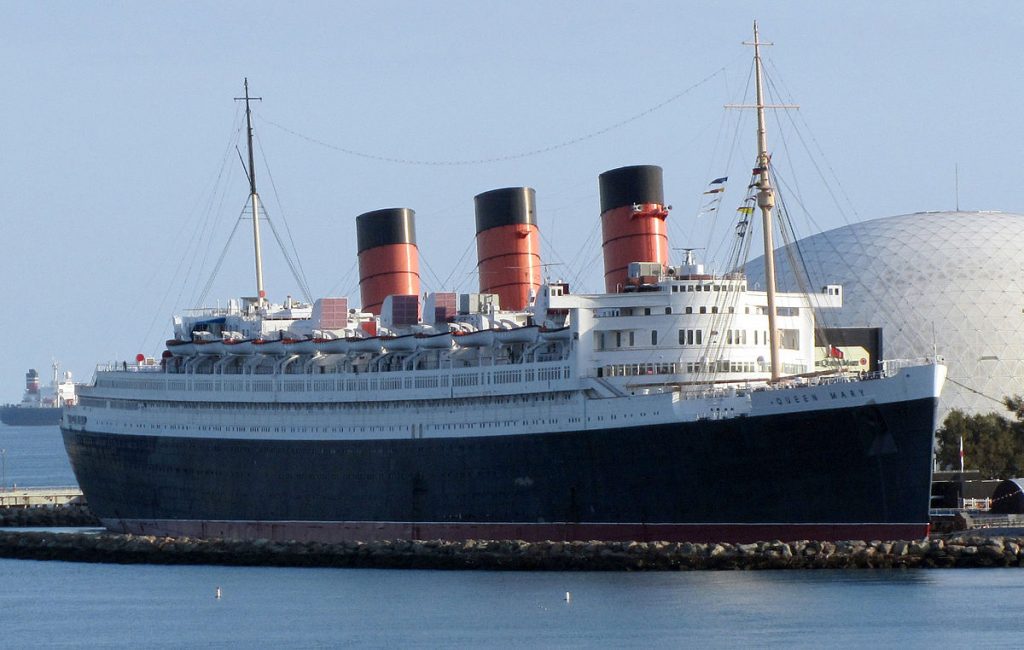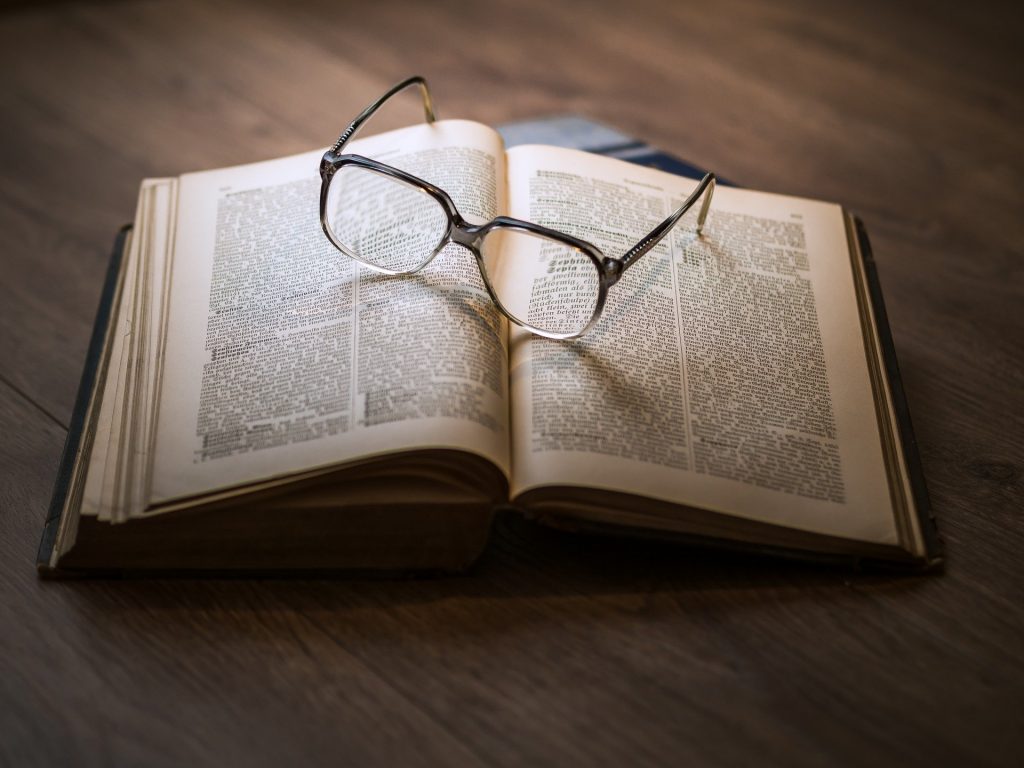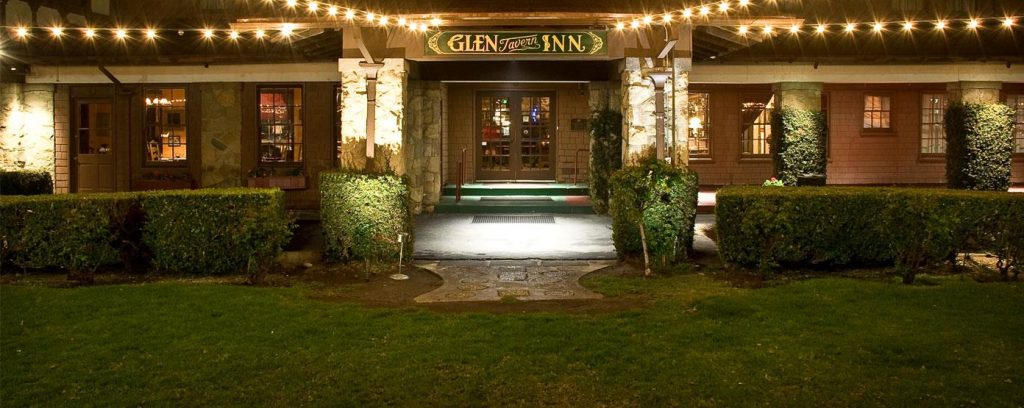RMS Queen Mary
A Spirited Ship by Nicole Strickland
There are very few ships still in existence that compare to the innate beauty and rich history of the RMS Queen Mary. The RMS Queen Mary is perhaps, the most legendary liner to ever sail the oceans. A testament to British shipbuilding, the Mary is currently moored in Long Beach, California, where it has ebbed and flowed with the tide since 1967. I have been conducting both historical and paranormal research on the Queen Mary for 15 years. I have been able to investigate many popular and highly traveled areas on the ship. When I step aboard the ship’s decks, I am instantly entranced by her innate beauty, innocent aura and historical significance.
The task of building the RMS Queen Mary represented a brave and elusive responsibility, especially in the early 1930s, as she was to be the biggest, quickest and most luxurious liner ever constructed. With design concepts commencing in 1926, It came at a time when there was fierce competition between ship building companies in Britain, Germany, Italy and the United States. Cunard’s elderly trio of express liners, Mauritania, Aquitania and Berengaria, were eventually replaced by the Mary and her running mate, the RMS Queen Elizabeth.
For its time period, John Brown & Company, Ltd. was probably the most established shipyard on the planet. Its origins began in Glascow in 1847. It carried a strong reputation for building reliable passenger vessels, many for the Cunard line, as well as battleships and large liners for other companies. In 1871, the renowned company moved to the Barns o’ Clyde (Clydebank) and in 1899, John Brown and Company, Ltd., a Sheffield steel maker, took over the previous shipyard and held the construction of the legendary Queen Mary entirely in its hands.
Completely built, the Queen Mary was equipped with many public rooms and facilities to cater to each passenger. Art Deco-inspired, she was equipped with Sports, Sun, Promenade, Main and A-H Decks. She had 27 public rooms, 21 elevators, three restaurants, a ball room, gymnasium, hair and beauty salons, a Turkish bath and two pools, a garage, mailing processing areas, two cargo holds, three children’s playrooms, a chapel and synagogue, writing and drawing rooms, two libraries, three lounges, three smoking rooms, a shopping area, isolation wards and a completely functioning hospital. Furthermore, her machinery was nothing less than pure engineering excellence. In fact, 56 different varieties of woods from all over the world were utilized for the ship’s interior rooms. The Queen Mary’s utilization of this material was so ubiquitous, that she was given the name, “The Ship of Beautiful Woods.”
September 26, 1934 marked the official day of the RMS Queen Mary’s launching. More than 200,000 eager people came to watch her meet the waters. Children even had a day off of school to witness this majestic event. No one knew the ship’s new title. Interestingly, there were 101 suggested titles for Job 534. People assumed the liner would be named Queen Victoria and keep up with the tradition of titles ending in “ia.” However, as H.M. Queen Mary cut the satin cord and crashed a bottle of Australian wine against the ship’s bow, she said, “I am happy to name this ship, Queen Mary.” She went on to say, “I wish success to her and to all who sail in her.”
The Queen Mary began her maiden voyage as a luxury cruise liner on May 27, 1936, completing successful pre-WWII and post-WWII round trip voyages from Southampton to New York City. Many notable people, such as business moguls, entertainers and actors, have traveled aboard the Queen Mary. While sailing on the Queen Mary, passengers had the opportunities to exchange viewpoints, political beliefs and ideas, while further enjoying various amenities catering to a broad range of interests. Furthermore, Art-Deco brilliance can still be seen throughout its inner walls. Even in retirement, the Queen Mary historic ship still remains as popular as she was the day she sailed.
The Blue Riband is a prestigious prize given to a passenger ship with the fastest crossing on the Atlantic Ocean. The Queen Mary attained this accolade twice during her luxury ocean liner years. In August of 1936, three months after the ship’s maiden voyage, the Queen Mary took the coveted Blue Riband prize from the Normandie, as she posted impressive quick times, both ways on the same transatlantic route. After a stint in dry dock to receive adjustments and brand new propellers and on her 48th round-trip voyage, the Queen Mary won back the admired prize in August of 1938. She completed the 2,907-mile westward journey in three days, 21 hours and 48 minutes, at an impressive rate of 30.99 knots The Mary held onto this accolade for the next fourteen years, until the S.S. United States achieved it in 1952.
Arduous times lay ahead for the RMS Queen Mary. On August 30, 1939, the Queen Maryanxiously sailed from Southampton to New York, as war was nearly imminent. In September of 1939, war was officially declared between Britain and Germany, ultimately placing the Queen Mary in a precarious situation. Both the RMS Queen Mary and her sister liner, RMS Queen Elizabeth, were therefore requisitioned for service in World War II. In March of 1940, the British Government informed Cunard that the Queen Mary would be outfitted for troopship duties, lasting the length of combat. In fact, due to the liner’s fast speeds, she was able to carry numerous servicemen from all walks of life to and from their destinations. Adolf Hitler even had a ripe award of $250,000 out to any skipper who could sink the massive liner. Of course, Hitler’s plan never succeeded, as The Grey Ghost consistently outsmarted the enemy. The ship’s crew and servicemen should be remembered for their diligence in keeping its hull and inner walls afloat.
The RMS Queen Mary, alongside her sister ship, the RMS Queen Elizabeth, have contributed to the World War II allied forces in so many unimaginable ways. Prime Minister, Sir Winston Churchill said, “Built for the arts of peace and to link the old world with the new, the Queens challenged the fury of Hitlerism in the battle of the Atlantic. Without their aid, the day of final victory must have unquestionably been postponed.”
The RMS Queen Mary’s sailing success was not without tragedy, as the liner nearly endured her end of days while sailing the oceans. The worst tragedy occurred on October 2, 1942 as the Queen Mary was making her way across the oceans. She accidentally struck her World War I British escort ship, the HMS Curacoa, as both ships were involved in a mandatory zigzag motion to avoid obliteration by the enemy. Tragically, over 300 Curacoan sailors drowned as a result of the accident. Unfortunately, due to strict Navy orders, the Queen Mary could not stop to rescue the surviving men. All she could do was throw out life preservers for men to use as a floatation device. The Curacoa met the bottom of the ocean within five minutes. Tragically, many of its sailors’ phantom calls for help can still be heard to this day in the R Deck Forward area of the ship.
The Mary once again evaded disaster when she sailed into Trinidad to refuel. A German submarine sailed into Trinidad and actually sunk two idling vessels. If the Mary had not received an urgent coded message to leave port and alter her route, she, too, would have met her demise at the bottom of the ocean. In 1941, both sister liners traveled through the hot climates of the Indian Ocean and Red Sea without air-conditioning. The lower decks would reach a stifling triple digit temperature. Therefore, numerous men suffered physical ailments brought on by the oppressive heat. Arguments and gang warfare consistently transpired.
The Mary, once again, encountered two more near catastrophic events. German and Italian spies uncovered the Mary’s whereabouts and transmitted this information to U-boats situated off the Brazilian coast. Once again, with luck on her side, allied forces intercepted the message and changed the ship’s route. An oil tanker was obliterated as it departed the port at the exact time the Queen Mary was scheduled to leave the port. Averting tragedy, the ship commenced her 3,300-mile venture to Cape Town in March of 1942.
Then, as the Queen Mary rapidly pushed onto South Africa, a life-threatening fire erupted on B Deck, just underneath the liner’s bridge. This two-hour flame fest was ignited by faulty electrical insulation. As the smoke and flames reached the bridge, every crewman performed his duties perfectly. Thus, no one was mandated to abandon ship. Once again, the Queen Maryprevailed.
Post World War II, the RMS Queen Mary returned to luxury as an extravagant vessel, where many people could relax, vacation and enjoy her ornate and gorgeous ambience, as well as the abundance of onboard activities. As previously mentioned, quite a few celebrity names have touched upon her decks during her reigning days on the seas. Long Beach, California has been the Queen Mary’s docked home since 1967. Thousands of visitors flock from all over the world each year to visit the RMS Queen Mary in Southern California.
The RMS Queen Mary is equipped to fulfill the curiosity of many people, from children to elderly adults. She is loaded with many attractions, shops and various dining options. The Queen is home to annual events, various tours and a variety of ongoing and seasonal attractions. She has a variety of gift and souvenir stores that cater to those who love to shop. For those who love art, the ship still houses some of her original Art-Deco pieces. She also features great sightseeing views from her Promenade and Sun Deck areas. The ship wouldn’t be Queen without featuring award-winning restaurants, gratifying the pickiest of eaters. The Mary is quite the entertainer, as she has even been home to various television and movie productions. There is even a great hotel onboard for those who want to spend the night on the Queen. Passengers have the option of staying on A deck, B deck or M deck. There are many different cabins available ranging from small twin bed cabins to luxurious first class staterooms.
Today, the Queen Mary is noted as the 6th most haunted location on our planet. Considering her history, it is no wonder why she has this statistic. There are some theories for why the liner has so much spiritual energy. History and the paranormal share a deep kinship. Ghosts and spirits seem to be attracted to places that have experienced a lot of emotion, tragedy and death. There seems to be a connection between sentimental states and psychokinetic energy. Scientifically, water is a natural conductor for electricity and the ship sits in a body of water. Furthermore, she has elements that contain spiritual energy, such as quartz, iron and bronze. Inanimate objects, such as antiques and personal belongings, may also explain why a location becomes paranormally active. The Queen Mary holds numerous artifacts and original furniture pieces. It is theorized that some energies are attached to a particular object. Places that contain portals and vortexes are also known to house ghostly energy. Portals and vortexes are kind of difficult to explain and understand. Generally speaking, a portal allows spirits to travel from the living world to the spiritual world. Think of it like a bridge connecting two planes of existence. You guessed it: the Mary is said to house at least one portal in the women’s changing room, located in the former first and third class pool. Additionally, the ship seems to have some kind of psychokinetic influence where visitors from all over the world project their emotions and excitement on the ship. In my opinion, I do believe that there are other, more elusive reasons as to why the Mary is so paranormally active. Perhaps, the mortal world is not meant to understand them.
People experience many different types of ghostly energy on the ship. There are numerous visual sightings of apparitions and shadow figures. Individuals experience disembodied voices, cold spots and many personal accounts of the paranormal. There seems to be an equal amount of both residual and intelligent spiritual energy. In my experience aboard the vessel, and having investigated numerous locations throughout California and even out-of-state, I believe that the Queen Mary is the most active location I have ever researched. The historic ship is a mecca for paranormal researchers and a huge capacitor for spiritual energy. As moths are to a flame, spirits are to the Queen Mary!
Since I have been investigating the ship for so many years, I have been able to develop a rapport with some of its resident intelligent energies. There is one little spirit that I want to discuss in particular. Her name is Jackie. There are many theories attempting to understand her origins; however, no one really knows where she comes from. I will say that there is no forensic evidence that proves a little female child by the name Jackie passed away on the ship. None. With that said, it leaves many of us with questions about her: Was she a stowaway that somehow got lost aboard the ship? Was the name “Jackie” a middle name suggesting why she wasn’t recognized in the passenger manifests? Did she ever travel the RMS Queen Mary with parents and other siblings? Or, was her dad one of the many servicemen fighting for freedom during World War II? Has she come through one of the alleged portals? Is she somehow the Queen Mary’sinnocent voice? Has Jackie been chosen to be the Queen Mary’s spiritual ambassador? These questions and a lot more, are ones that investigators and researchers have tried to answer.
Even though she displays typical childlike tendencies, I do believe that Jackie is a highly evolved spirit that has many ethereal duties on the Queen Mary. I have had numerous personal accounts with her, as well as captured evidence of her introducing herself as “Jackie.” She loves to interact with guests and is highly talkative. I have had the honor of seeing her spirit twice in the former first and third class pool, where she is most commonly experienced.
Visitors can have a ghostly encounter in any area of the ship. Many people report the phantom smell of strong cigar smoke right outside British Prime Minister, Winston Churchill’s suite. There have been reports of disembodied conversations and screams on various decks. The Queen Mary’s curious ghosts also like to knock on passenger doors and walls throughout. Phantom footsteps, sounds, smells and voices can be heard from anywhere on the ship. You name the ghost and the Queen Mary most likely has it. For ghost seekers alike, the Queen has various paranormal tours, where passengers can embark on the ship’s paranormal hot spots.
The RMS Queen Mary isn’t just a ship, she’s a legend: a legend with a beautiful spiritual aura. She definitely speaks of a nostalgic and bygone era. There were many people from different walks of life who traveled the oceans on the Queen. The RMS Queen Mary has navigated folks who might not see the next day’s beautiful sunrise all the way to those folks who saturated themselves in her luxury and extravagance. Thus, the ship is home to various impressions left from her former crew and passengers, some who are still trying to find their way home. Her inherent beauty, nostalgic character and abounding history will remain in the heart and soul of her visitors forever.
For more information about the RMS Queen Mary, you can visit her website at http://www.queenmary.com or you can call her directly at (562) 435-3511. You can also visit my website, www.spiritedqueenmary.com



